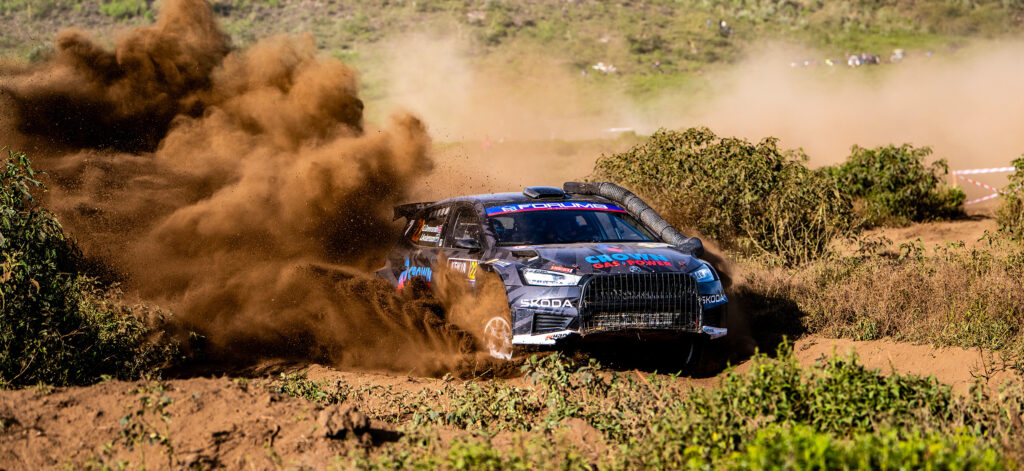After an unusual Rally Sweden, which was significantly shortened and driven in part on frozen gravel, the first true gravel rally of the WRC season is coming – the Rally Mexico. The crews are now facing a wholly new challenge.
The third round of the season is unique for the altitude in which the stages take place. The course climbs all the way up to 2,737 metres above sea level, the highest of the whole season. This, of course, means thinner air and engine power reduced by around 20 %. Another typical feature is the high temperature. The gravel surface of the stages is not exceptionally broken, but the gravel tends to be on the soft side, which means that in second runs the ruts are deep enough to reach the rock below, so not only the medium but also the hard tyres will be used.
The rally starts on Thursday evening with a short spectator stage in the streets of Guanajuato, which will be run two times, instead of once, this year. Another exciting stage will take place at the end of both Friday’s and Saturday’s legs at the León racetrack, complete with gravel, tarmac, a ford and a huge jump – it’s really something special for the spectators. Also hugely popular is Friday’s El Chocolate special stage, which is almost 32 kilometres long (the second-longest in the rally) and will take the crews to altitudes way over 2,500 metres above sea level. This is another stage that’s got everything – climbs and descents, hairpins and fast sections, narrow points and wide roads.
On Saturday, the crews will take to the roads around Alfaro and Derramadero, which haven’t been used in several years. The rally will conclude with the famous El Brinco stage, which has a new jump right onto the finish line.
Rally Mexico was born in 1979 from the cooperation of the two largest car clubs in Mexico. Until 1985, it took place in Mexico state. Then, after a six-year hiatus, the rally returned in 1991, with a route following El Pas de Cortés between the two largest volcanoes in Mexico. For 1993, the organizers changed the concept to a rally that was shorter, but with more timed kilometres. The rally, under the name of Valle de Bravo, was successful, but the following year the organizers decided to host a different event and there was another pause until 1996.
Then, the change towards a more internationalized rally began. The event was taken over by a different promoter, who, in 1998, decided to rename the rally and move it to Guanajuato. Between 2001 and 2003, the rally was visited by FIA observers and in 2004, it was included in the WRC calendar. Since that time, it has only missed one WRC season, in 2009. The 2007 Rally Guanajuato Mexico stands out in WRC history as the rally with the shortest transport stages – out of almost 850 kilometres of the rally, more than 366 kilometres were special stages. That’s more than 43%! The driver with the most wins in Mexico is Sébastien Loeb with six, followed by Sébastien Ogier with five.
Among this year’s entries are seven crews in ŠKODA FABIA Rally2. Their drivers include former WRC 2 champion Pontus Tidemand who knows Rally Mexico well and has won it twice (in 2017 and 2018 in the WRC 2 category); extremely experienced Ricardo Triviño, last year’s Mexican champion and multiple winner of NACAM championship (driven in both North and South America); another local matador Benito Guerra jr.; and Kajetan Kajetanowicz from Poland.





